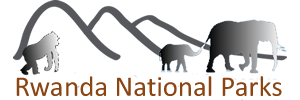When is the best time to visit Rwanda? This is always the first question in the minds of tourists intending to visit the land of a thousand hills. However, there is no right answer to this question because time depends of what activity you are planning to engage in but also personal interests because what seems perfect for you might not be a good idea for someone else thus what you need to know is that Rwanda is an all year destination.
Therefore, it is evident that best time depends on the activity you are planning to undertake although you can still enjoy them at whatever season you visit. Every season has pros and cons thus it shouldn’t be an issue when planning Rwanda safaris.
Gorilla trekking which is undeniably the most demanded tourist activity in the country is usually preferred during the dry season from mid-December to early February and from June to September. Why so? This time usually offers the best tracking conditions that include less muddy and slippery hiking trails. However, don’t be too excited because Volcanoes National Park is nestled on an area of higher elevation thus possibility of experiencing rain during the dry seasons is relatively higher than you can actually imagine.
The dry season is also the “peak season” where the demand for gorilla permits is extremely high, thus intending trekkers are advised to book for permits and the entire safari at least 6 months in advance to avoid last minute disappointments. Also, prices/rates for accommodation facilities and hiring cars tend to be higher during this time of the year. On a brighter note, the best time to visit Rwanda for gorilla trekking is the month of September because it is when newborn gorillas are named during the annual Kwita Izina Ceremony.
Nonetheless, the rainy season (March to May and October of November) also offers opportunities for gorilla trekking but are avoided because hiking trails tend to be muddy and slippery. Not only that, vegetation tends to overgrow hence it always becomes challenging to maneuver through the jungles but that doesn’t mean all is bad during the rainy season. Actually, I would say it’s the best time for gorilla trekking or Chimpanzee tracking (within Nyungwe Forest National Park) because during this time, there is much food for the primates thus they don’t have to move to far places in search for food, thus trekkers in turn don’t have to take longer time to search for them. Not only that, this season offers perfect photography conditions because after the rains, the heavy clouds are cleared thus excellent for capturing the scenery. However, in no day has gorilla trekking been cancelled due to the weather and surprisingly even during the rainy season, the sun will come out during the day and activities continue as planned.
Unlike activities such as gorilla trekking and chimpanzee tracking, bird watching is perfect during the rainy season because there are higher chances of spotting migratory birds species during this time of the year.
However, regardless of what season you are planning to undertake the Rwanda safari, you are advised to pack a rainproof rain jacket or poncho, strong waterproof hiking boots, long sleeved shirts, long trousers, a sweater, rainproof backpack for carrying your packed lunch or snacks, drinking water, camera and binoculars during the hike, a hat and sunglasses among others.
Therefore, Rwanda is an all year destination but most tourists prefer visiting in the dry season (from June to September and December to February) because hiking trails are generally less muddy and slippery. Although often ignored, the rainy season is also good for photography because after rain, the clouds clear and also due to plenty food, the mountain gorillas and even chimpanzees don’t move to far distances thus takes shorter time to spot them than it is during the dry season.
